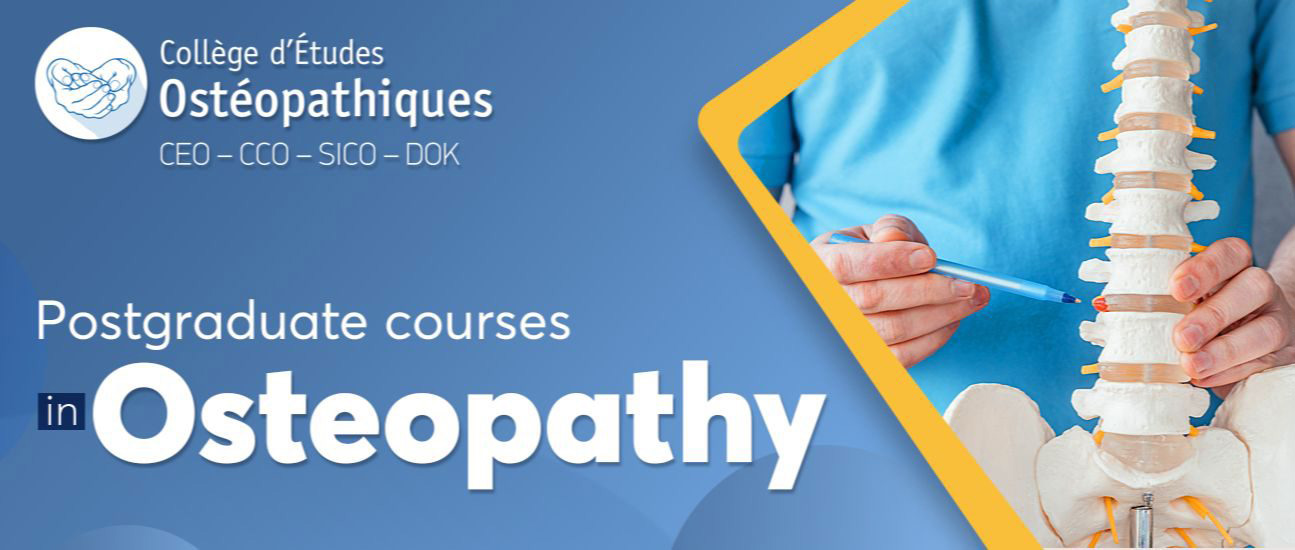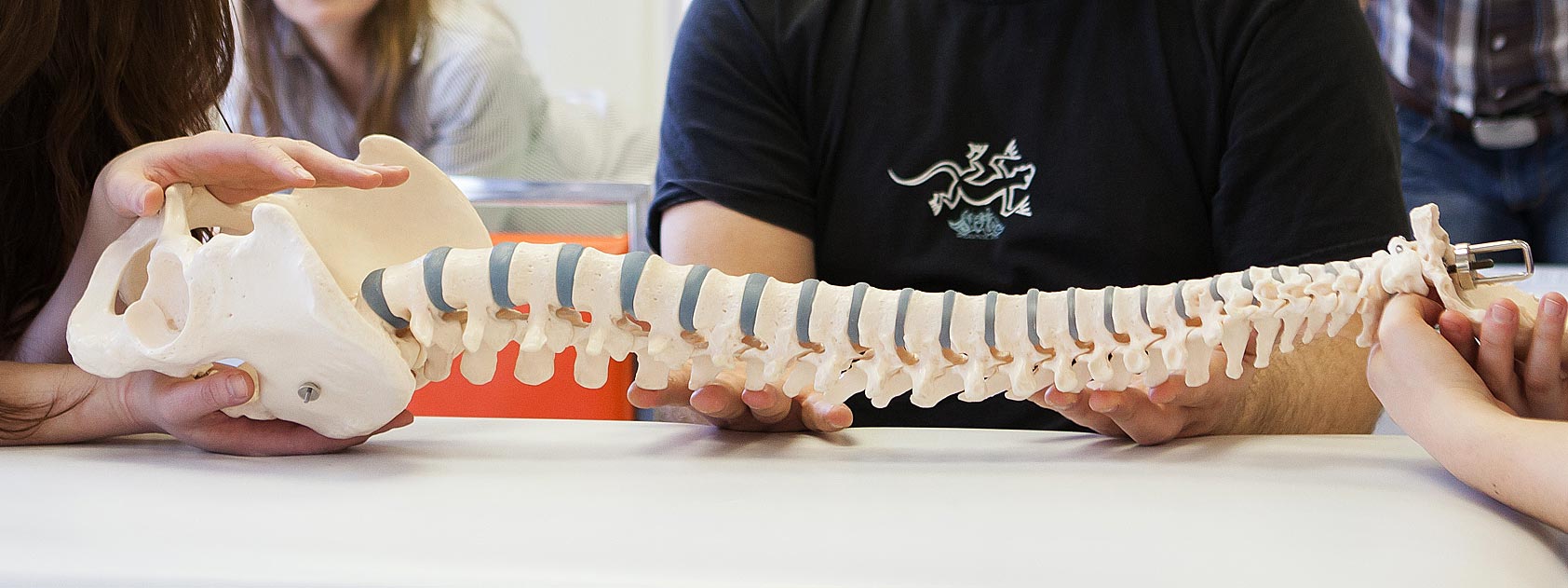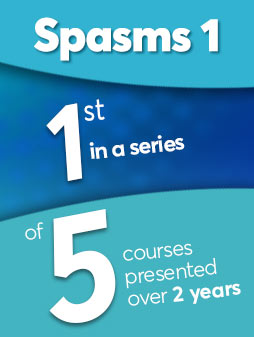Course series
The brain, neuroplasticity and the effectiveness of osteopathy (Endocranial spasms)
Philippe Druelle, D.O. was the first in the history of Osteopathy to describe and develop methods to directly address the mechanisms and dynamics of the brain and spinal cord as expressed by Viola Frymann, D.O., MD, FAAO, in 2002.
For 40 years, he has described the different mechanisms of the brain and has developed precise methods to relieve patients in the field of concussions, the aftermath of emotional shocks and then, in the transmission of dysfunctional areas that could be transmitted in a transgenerational and civilizational way by disrupting the expression of the life field. Philippe Druelle has done several experiments at the Sechenov Institute over a period of 15 years and will share with you the significant results of this work.
For 40 years, he has described the different mechanisms of the brain and has developed precise methods to relieve patients in the field of concussions, the aftermath of emotional shocks and then, in the transmission of dysfunctional areas that could be transmitted in a transgenerational and civilizational way by disrupting the expression of the life field. Philippe Druelle has done several experiments at the Sechenov Institute over a period of 15 years and will share with you the significant results of this work.
The 5 courses will be presented to you by:
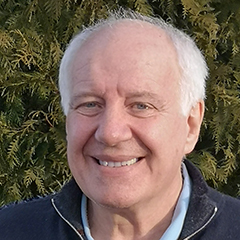
Philippe Druelle, D.O.
President founder

Geneviève Forget, D.O.
Professor
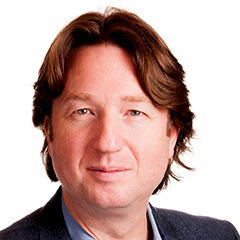
Joël Monzée, Ph. D.
Doctor in neurosciences
Geneviève Forget also teaches this subject and has done significant research on the effectiveness of this method. Joël Monzée has developed numerous conferences that emphasize the importance of neuroscience in understanding psychological imbalances and, also, how emotional disorders can affect brain dynamics.
Course descriptions
Endocranial spasms – stage I
Brain dysfunctions following concussions and head injuries. Physical imprints in the tissue matrix.
The brain, neuroplasticity, and the effectiveness of osteopathy (endocranial spasms – stage I)
Brain dysfunctions following concussions and head trauma. Physical imprints in the tissue matrix. Improvement of brain dynamics and ventricular activity following a traumatic, vascular or toxic lesion.
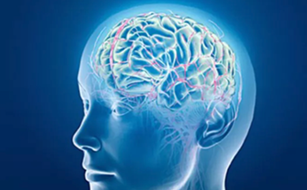
Presentation
This seminar is very popular each year, as it allows participants to directly modify cranial and spinal dynamics allowing for better health functions both physically and behaviorally.
Philippe Druelle, D.O., founder of this approach, is internationally recognized for his work in Osteopathy and for the techniques he has developed since 1982 to increase the systemic activity of the brain, the dynamics of the lateral ventricles and the limbic system and the thalamus with the 3rd ventricle, the corpus callosum, the brainstem, the insula, the free flow of fluids and energies as well as the vascular dynamics in the brain and the medulla.
We have added the Vagus Nerve Self-Regulation System to the program which will continue in the other courses as well as target organ care.
It will teach methods of assessment and normalization of the nervous and ventricular system of patients who have sequelae of physical, vascular or stress trauma.
This workshop is exciting because it allows us to interact with the different parts of the nervous system in a precise, rational and efficient manner. The most important thing is to provide care that is adapted to the severity of the case and the injuries that occurred prior to the traumatic shock.
This workshop focuses on methodology and clinical applications to facilitate the integration of this program into daily practice. Part of this teaching will also address physical and emotional imprints, the notion of anchoring described by Philippe Druelle and how to normalize them. The relationship between tissue memory and true nature will also be taught in the second class with Philippe Druelle on the aftermath of emotional shocks.
Philippe Druelle, D.O., founder of this approach, is internationally recognized for his work in Osteopathy and for the techniques he has developed since 1982 to increase the systemic activity of the brain, the dynamics of the lateral ventricles and the limbic system and the thalamus with the 3rd ventricle, the corpus callosum, the brainstem, the insula, the free flow of fluids and energies as well as the vascular dynamics in the brain and the medulla.
We have added the Vagus Nerve Self-Regulation System to the program which will continue in the other courses as well as target organ care.
It will teach methods of assessment and normalization of the nervous and ventricular system of patients who have sequelae of physical, vascular or stress trauma.
This workshop is exciting because it allows us to interact with the different parts of the nervous system in a precise, rational and efficient manner. The most important thing is to provide care that is adapted to the severity of the case and the injuries that occurred prior to the traumatic shock.
This workshop focuses on methodology and clinical applications to facilitate the integration of this program into daily practice. Part of this teaching will also address physical and emotional imprints, the notion of anchoring described by Philippe Druelle and how to normalize them. The relationship between tissue memory and true nature will also be taught in the second class with Philippe Druelle on the aftermath of emotional shocks.
PROGRAM
Brain normality and the laws governing good neuronal plasticity. Definition and description of the five different types of endocranial spasms (traumatic, emotional, clinical applications for infants, young children and adolescents (neuro-functional, cognitive, behavioral disorders), transgenerational and civilization).
Palpatory learning to dialogue at the tissue level with the encephalon, the medulla and the ventricular apparatus. Palpatory distinction between the protocols of palpation I, II, III for the solid, liquid and vibratory aspect of the matter. Validation by experienced osteopaths.
Appreciation and methods of volumetric recovery of the medulla, cerebral hemispheres, each lobe, the brain stem, the corpus callosum and the internal capsule associated with the systemic activity of the brain. Work of the lateral ventricles, the 3rd ventricle and the thalamus, etc. Relationship with the central chain and clinical methodology to relieve target areas in the physiology.
Learning and validation of the participant's ability to dialogue with spasms of traumatic, vascular and toxic origin (stage 1).
Palpatory learning to dialogue at the tissue level with the encephalon, the medulla and the ventricular apparatus. Palpatory distinction between the protocols of palpation I, II, III for the solid, liquid and vibratory aspect of the matter. Validation by experienced osteopaths.
Appreciation and methods of volumetric recovery of the medulla, cerebral hemispheres, each lobe, the brain stem, the corpus callosum and the internal capsule associated with the systemic activity of the brain. Work of the lateral ventricles, the 3rd ventricle and the thalamus, etc. Relationship with the central chain and clinical methodology to relieve target areas in the physiology.
Learning and validation of the participant's ability to dialogue with spasms of traumatic, vascular and toxic origin (stage 1).
Endocranial spasms – stage II
Cerebral and visceral dysfunctions following emotional shocks. Emotional imprints and fluid flow. The importance of the vagus nerve in the auto-regulation system. The role of affect and emotional spasms.
The tissue and liquid reaction aspect of the matter to the emotional impact
Cerebral and visceral dysfunctions following emotional shocks. Emotional imprints and fluid flow. The importance of the vagus nerve in the autoregulation system. The role of affect and emotional spasms.

Presentation
Many patients have experienced emotional shocks that have limited their lives. This seminar will provide good solutions to relieve your patients. It is exciting and requires having done the spasms I seminar so that you can progress. We will review the most important points of stage I with a “question and answer” period at the beginning of the seminar, including how to balance the reciprocal tension of the membranes with the balanced pressure of the liquids, to allow the biodynamic force to act with its full potential.
The seminar will focus on detecting and working on the brain areas affected by emotional shocks.
Indeed, following an event that has emotionally marked a person, the metabolic self-regulation system, the hormonal balance, and the circulatory activity of the systems are affected. The body creates compensatory systems which, if they remain permanent, will modify the functions of the brain and its systemic activity. Target organs will be affected in their functions, chronic functional disorders, behavioral attitudes, inabilities to adapt or to modify their lives will appear. This phenomenon brings physical and inner suffering, sometimes very important with chronicity. We can perceive these areas and allow them to regain function and vitality through appropriate work. You will obtain excellent results with these methods, and you will be guided during the practice and by the example of many clinical cases.
Joël Monzée, Ph. D. will give a lecture on the physical and psychological consequences of an emotional shock.
The seminar will focus on detecting and working on the brain areas affected by emotional shocks.
Indeed, following an event that has emotionally marked a person, the metabolic self-regulation system, the hormonal balance, and the circulatory activity of the systems are affected. The body creates compensatory systems which, if they remain permanent, will modify the functions of the brain and its systemic activity. Target organs will be affected in their functions, chronic functional disorders, behavioral attitudes, inabilities to adapt or to modify their lives will appear. This phenomenon brings physical and inner suffering, sometimes very important with chronicity. We can perceive these areas and allow them to regain function and vitality through appropriate work. You will obtain excellent results with these methods, and you will be guided during the practice and by the example of many clinical cases.
Joël Monzée, Ph. D. will give a lecture on the physical and psychological consequences of an emotional shock.
Program
Theory
- General introduction - Definition and presentation of spasms of emotional origin, the difference with those of physical origin on palpation clinical signs, and therapeutic comparison with spasms of transgenerational origin.
- Anatomy, physiology of the components related to emotional impacts - The physiology of emotions and reactions according to typologies. The different modes of the body's response. Clinical examples and applications.
- Importance of becoming aware and deciding the life path after the normalization of the zones affected by the emotional shock - Concrete illustration through real-life clinical cases. Importance for the osteopath to work with the True Nature of the patient. Definition and use of this reality. The notion of forgiveness and resolution of the spasm. How to follow the patient and help him to regain his full potential.
- The specific characteristics of the human species, according to Sir Eccles, neurophysiologist and Nobel Prize winner, and their applications in therapeutics.
Practice
- Revision of protocol 1 (at the matter level) and learning of protocol 2 (at the liquid and fluid level). Implementation through exercises.
- Description and importance of fluid flow in relation to emotions. The "jellyfish effect" or general cranial, medulla, and body movement. Normalization of the CV LAT and CV 3 with the Challenge the potency. Fluid and liquid dynamics. Normalization of target organs in chronic progressive diseases.
- Global preparatory work of the body fluid and the central chain.
- Global work of the nervous system for the spinal cord, the brain, and the ventricular network.
- Work on the emotional barriers and imprints and the functioning of the vagus nerve. Work on the different layers of the brain (Rolando and Sylvius scissure, insula, limbic system, diencephalon, central gray nuclei, brainstem, etc.) and their impact on health.
- Integration and clinical methodology with the techniques learned in the spasms I seminar, with indications and adaptations related to spasms II, mainly the work of the ventricles and fluid dynamics.
- Work on emotional spasms and their target zones in physiology.
- Integration, verbal expression of the emotional barrier.
- Patient management protocol.
This program is a summary. During the course, which will be focused on practice, we will check and validate your palpation, especially for the work we will do on fluid and liquid dynamics.
We wish you a good experience and good training to relieve your patients.
We wish you a good experience and good training to relieve your patients.
Endocranial spasms – stage II (optional suite)
Clinical applications for infants, young children, and adolescents (neuro-functional, cognitive, behavioral disorders).
The brain, neuroplasticity, and the effectiveness of osteopathy (endocranial spasms – stage II optional suite)
Clinical applications for infants, young children, and adolescents (neuro-functional, cognitive, and behavioral disorders).
Presentation
Work on brain dysfunction zones in infants, young children, and adolescents. After the first two seminars, you are able to relieve many children.
The sooner a child is cared for, the better his or her chances are, and the more we care for the children, the healthier adults we will have in our society.
Many children and adolescents have behavioral, cognitive, and physical abnormalities. This seminar will give you concrete solutions to relieve their deficiencies, notably autism, cerebral palsy of physical origin, and all kinds of handicaps.
There are many causes to relieve these children with Osteopathy.
The sooner a child is cared for, the better his or her chances are, and the more we care for the children, the healthier adults we will have in our society.
Many children and adolescents have behavioral, cognitive, and physical abnormalities. This seminar will give you concrete solutions to relieve their deficiencies, notably autism, cerebral palsy of physical origin, and all kinds of handicaps.
There are many causes to relieve these children with Osteopathy.
- We know that cerebral dysfunctions can cause not only physical disorders, but also affective and emotional disorders, which are often reinforced by the attitude of the parents, the people responsible for their education, and society. For example, intrauterine compression, birth with forceps, suction cups, and breech births, etc.
- It is also recognized that stresses can cause physical dysfunctions which in turn lead to cognitive, social, and behavioral problems. For example, parental difficulties during pregnancy, or early childhood. Affective and emotional disorders, lack of love and tenderness, respect, and consideration.
This seminar will propose methods adapted for different ages, in three categories: infants, young children, and adolescents.
It is a seminar rich in information and solutions to relieve them and allow them to continue their lives in full capacity and follow their destiny freely.
Joël Monzée will give two lectures on this subject and Philippe Druelle will show how to relieve cerebral and visceral dysfunctions in children of the three categories.
It is a seminar rich in information and solutions to relieve them and allow them to continue their lives in full capacity and follow their destiny freely.
Joël Monzée will give two lectures on this subject and Philippe Druelle will show how to relieve cerebral and visceral dysfunctions in children of the three categories.
Endocranial spasms – stage III
Transgenerational dysfunctions. The role of fields and epigenetics. Family lesions.
The vibratory electromagnetic aspect of matter and transgenerational influences
Transgenerational dysfunctions. The role of fields and epigenetics. Family lesions.
Presentation
Electromagnetic fields are the invisible weft of the tissue matrix and allow information to flow. Part lII will focus on the palpation of fields, especially electromagnetic fields, and on the practice of observing and healing changes in the dynamics and quality of brain matter resulting from transgenerational damage, and on the method of helping patients become autonomous, dysfunction-free, and free to choose.
Genetic and epigenetic research shows us that transgenerational transmission is a reality that affects many patients. Following events that have had an impact on a person at the physical and/or emotional level, certain modifications in the brain physiology and the different systems of the organism can become permanent and/or chronic, resulting in dysfunctions, diseases, or behavioral disorders.
Over the years, we realized that several members of the same family could present the same sites of dysfunction in the brain and in the physiological systems related to the central chain without having similar pathologies. Members of the same family could then develop different disorders, different diseases, behavioral attitudes (fears, for example) that could be different or similar.
We also progressively discovered that physical and/or emotional impacts could be transmitted from one generation to another. We have called these transmitted dysfunctions: endocranial spasms of transgenerational or family origin.
Genetic and epigenetic research shows us that transgenerational transmission is a reality that affects many patients. Following events that have had an impact on a person at the physical and/or emotional level, certain modifications in the brain physiology and the different systems of the organism can become permanent and/or chronic, resulting in dysfunctions, diseases, or behavioral disorders.
Over the years, we realized that several members of the same family could present the same sites of dysfunction in the brain and in the physiological systems related to the central chain without having similar pathologies. Members of the same family could then develop different disorders, different diseases, behavioral attitudes (fears, for example) that could be different or similar.
We also progressively discovered that physical and/or emotional impacts could be transmitted from one generation to another. We have called these transmitted dysfunctions: endocranial spasms of transgenerational or family origin.
Objectives
The objective of this seminar will be to explain these exciting mechanisms affecting transmission through electromagnetic fields, to teach you the means of discovering and identifying endocranial sites with dysfunctions in the endocranial dynamics of the encephalon, to heal the different kinds of modifications, and dysfunctions of the target organs and/or systems, and to accompany the patient on his way to his True Nature.
Program
1. General introduction
Presentation on electromagnetic fields and forces, and the changes in systemic activity and brain physiology as a result of a transgenerational impact. Its importance in the general balance of a person and the encouraging perspectives in the methodology of the affected sites. Presentation of different clinical cases. How electromagnetic fields act in our organism.
2. Definition and development of the following subjects:
- Presentation on the genetic and epigenetic involvement in transmission (scientific documents provided).
- The notion of family lineage, the family substitutions danger, the role of the father and mother in different traditions, the role and function of each member of the family.
- The different types of blanks (voids) and their impacts.
- The notions of lies, things left unsaid (or "phantoms"), consciousness subordination, abandonment, betrayal, undesired infants, etc.
3. Description of the different impacts and consequences on the evolution of a Human being.
- Lecture by Joël Monzée, Ph. D. on memories and affect.
- Presentation on the different essential stages of the Being during life. The importance, for the person, to develop is True Nature. Importance of the impacts and the transmission to the children.
- Review of the main techniques of spasms 1 and 2. Initiation to the work of the electromagnetic field weft and the palpation protocol III.
- Global body integrity work of electromagnetic fields according to the weft of the lines of force versus the radiance of the field. Application of various methods according to the dysfunction of the fields.
- Work in connection with the continuity of the central chain through the different fulcra. How to resonate with the breath of life and release its action.
- Preparatory work of the central nervous system at the level of the fields. The central cerebral dynamo in connection with the heart dynamo, and the central abdominal dynamo.
- Practical applications on the target zones associated with transgenerational spasms. The notion of energetic barrier and the vagus nerve II.
- Description of the specificity of transgenerational spasms at the palpatory, behavioral, and physiological levels. Practical application. Description of the different types of reactions according to the site and the cause. The notion of the active and passive lesion.
- Typical workflow with steps to free the brain area and use of electromagnetic fields (protocol 3), their importance to address the main site of transgenerational spasms.
- Lecture on the True Nature of our patients and Consciousness. The notion of Forgiveness, truth process, and evolution of Consciousness.
- Resolution of the spasm and life decision. How to behave with the patient at this time of the follow-up. The notion of active neutrality.
Conclusion
Summary and methodology to relieve endocranial spasms of transgenerational origin. Importance of helping each individual in becoming self-sufficient and free. The role of an Osteopath in contact with families. The notion of spirituality and destiny. The tightrope walker in balance. Importance of freedom of choice to realize one's choices. True forgiveness and the power of hope. The possibility to transmit to our children a healthy world in balance by preserving their freedom.
Endocranial spasms – stage IV
Systemic dysfunctions due to education, religion, rules of societies, and civilizations. Summary of the 5 courses and life field.
The morphic vibratory aspect of matter and the civilizational and epigenetic transmissions.
Systemic dysfunctions due to education, religion, rules of societies, and civilizations. Summary of the 5 courses and life field.
Cultural and civilizational influences modifying the dynamic coherence disturbing the work of the universal force and the life field. Relation to the form and magnetic fields.
Presentation
We have made great progress in this area, and we are pleased to present the latest information and therapeutic ways to work at this level.
During this seminar, we will clearly explain the differences between the True Nature of a person and its relationship to the organization of our physical, mental, and emotional Being. When we act, do we do so by reflex, because of our experiences, because of education, religion, culture, or are they choices based on what we believe regardless of our tendencies or our obligations? Importance of interdictions on health.
These distortions, between what I believe, what I understand, and what I think, are fundamental to understanding hormonal, neuromodulator, neuropeptide, imbalances, etc., which will vary our physiological responses, our ground, and our healing capacity. The dynamics of the brain, which will be limited as a result of these inertias, are called civilizational spasms.
During this seminar, we will clearly explain the differences between the True Nature of a person and its relationship to the organization of our physical, mental, and emotional Being. When we act, do we do so by reflex, because of our experiences, because of education, religion, culture, or are they choices based on what we believe regardless of our tendencies or our obligations? Importance of interdictions on health.
These distortions, between what I believe, what I understand, and what I think, are fundamental to understanding hormonal, neuromodulator, neuropeptide, imbalances, etc., which will vary our physiological responses, our ground, and our healing capacity. The dynamics of the brain, which will be limited as a result of these inertias, are called civilizational spasms.
During this seminar, we will do practices to:
- Describe the life field, its action, and its relationship with the universal force or breath of life (Still, Becker, Frymann, Paracelsus, etc.). The notion of destiny and the meaning of life.
- Review the palpation previously acquired at the tissue, at the fluid, and at the electromagnetic levels, allowing us to move towards the palpation of morphogenic fields.
- Develop the palpation of morphogenic fields from electromagnetic fields at various locations in the body to detect and address the different types of lesions at this level, including the target areas associated with civilizational spasms.
- Develop the perception of the form from the life field and thus allow the work of anchors detection and the implementation of the form modeling.
- Carrying out the work of the civilizational spasm and allowing its adequate integration within the cerebral and body dynamics in the form and transmission to the various levels of matter in the chronological space-time of the present moment.
- Work with the universal force.
This new dimension makes it possible to relieve more adequately the mechanisms that promote balance and health.




